Convert units of mass including those with decimal representation using this worksheet.
How to Convert Metric Units of Mass
The units of mass are milligrams (mg), grams (g), kilograms (kg) and tonnes (t). The formulas for converting metric units of mass are as follows:
- 1 g = 1000 mg
- 1 kg = 1000 g
- 1 t = 1000 kg
When converting metric units of mass, all you need to remember is that the number 1000 is your friend! All units are multiples of 1000 unlike when converting length.
Understanding the difference between grams and kilograms can help students infer how light or heavy things would be if they are measured in milligrams or tonnes.
In this worksheet, students are tasked with converting mass measurements between units from 1 gram up to 100 tonnes. There are multiple answers which require the use of decimal representations.
An answer sheet is included with your download to make marking fast and easy!
Tips for Differentiation + Scaffolding
Task students who require an additional challenge with weighing objects using a classroom scale and then determining the mass of the objects in all four units featured in the worksheet. They can then choose the most appropriate unit for measuring the object.
Students who need extra support can refer to Converting Units of Measurement Posters which has the specific calculations necessary for converting units of mass.
In addition to individual student work time, use this worksheet as a:
- a rotation for guided maths groups
- lesson exit ticket
- fast finisher activity
- homework assignment
- whole-class review (via smartboard).
Easily Download & Print
This resource downloads as a PDF and includes an answer sheet.
Get more handy worksheets here!
Take a look at our similar worksheets for length and capacity below:
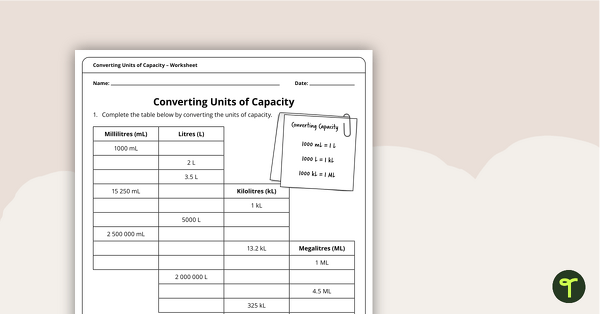
teaching resource
Converting Units of Capacity Worksheet
A worksheet that focuses on converting units of capacity.
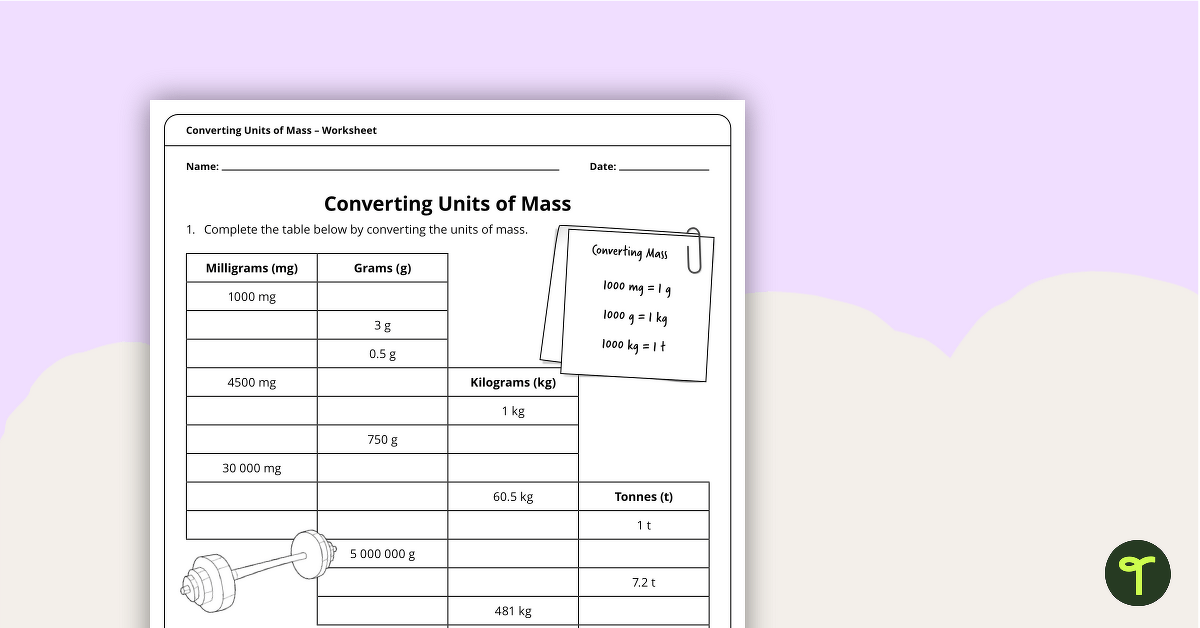

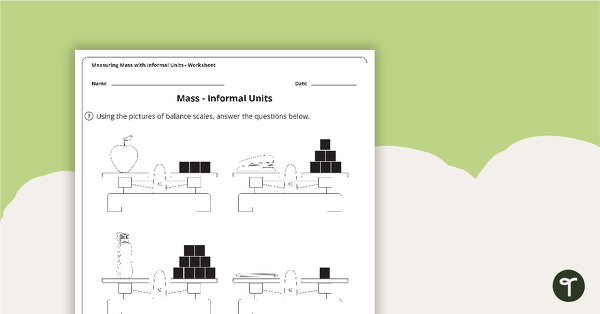
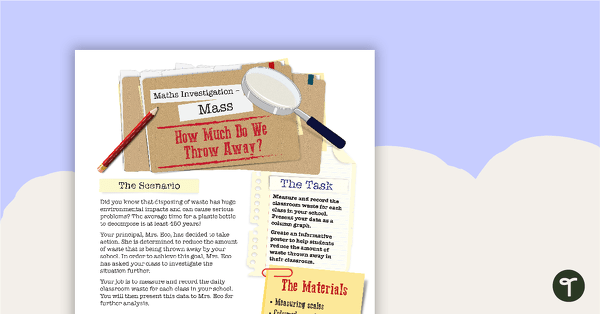
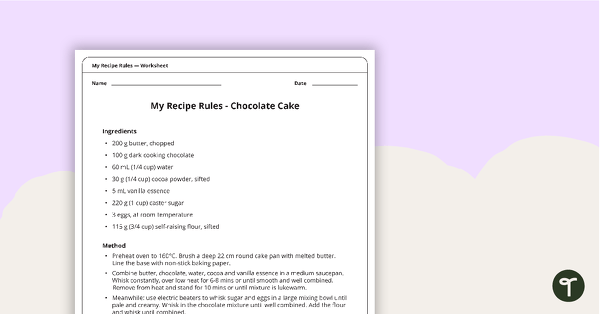

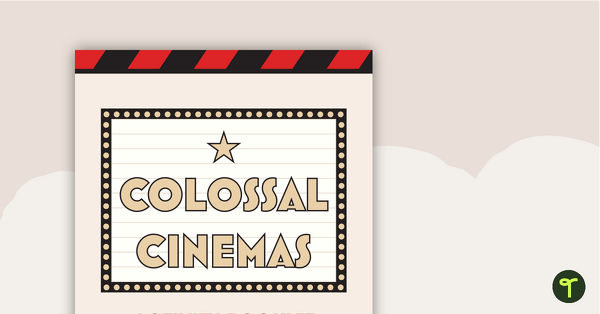
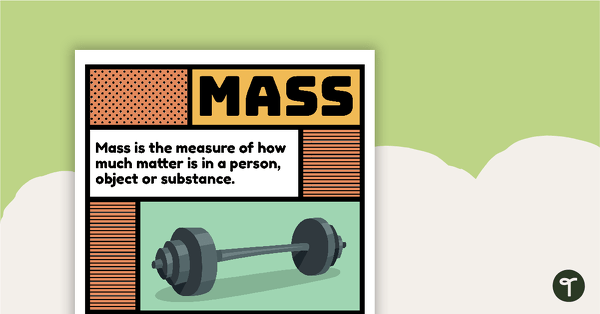
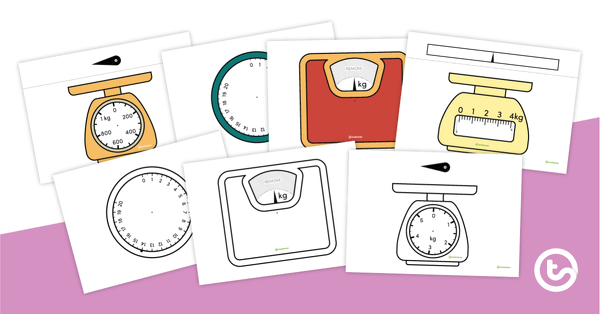
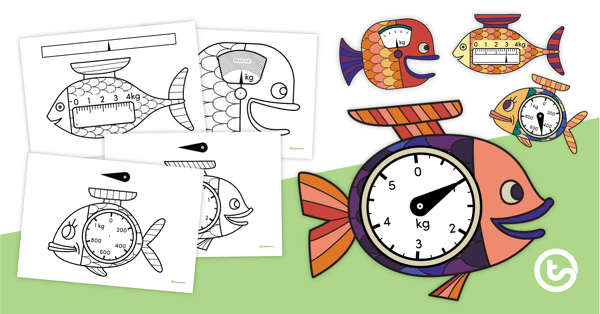
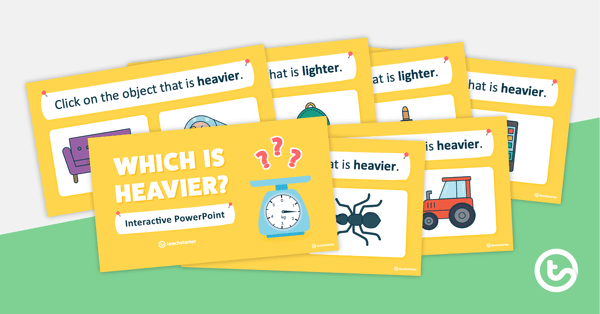
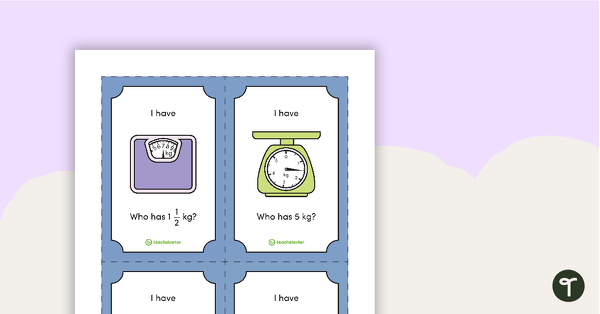
0 Comments
Write a review to help other teachers and parents like yourself. If you'd like to request a change to this resource, or report an error, select the corresponding tab above.